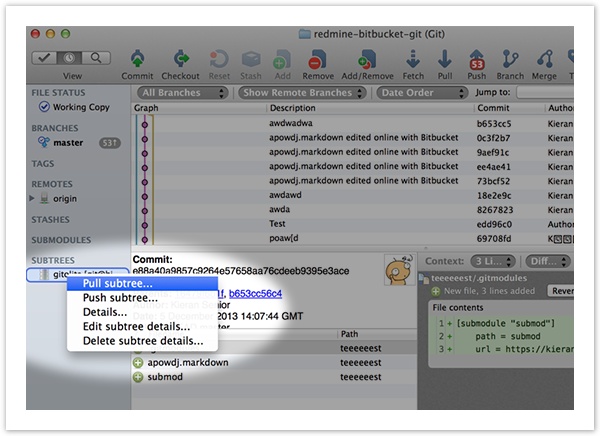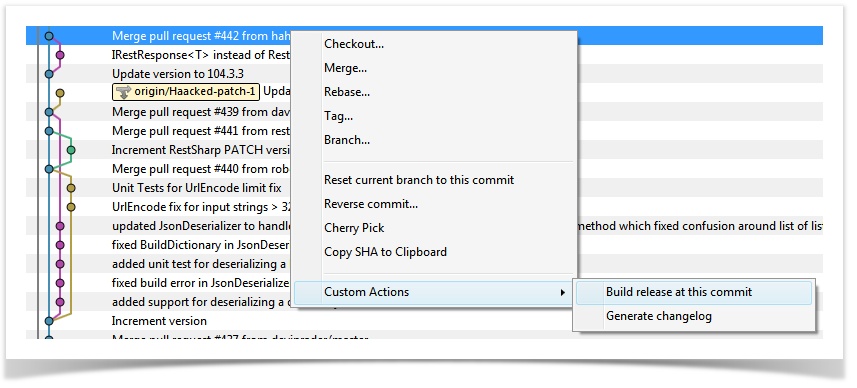

Any other commits you make to my-updates will also appear on that branch. Open Sourcetree and notice that your repository has Uncommitted changes.įrom the Unstaged files list, place a checkmark next to the survey.html file (and any other files with uncommitted changes).įrom the Confirm Stage? dialog, click OK.Ĭlick the Commit button at the top to commit the file.Įnter a commit message in the space provided, something like Answered questions.Ĭlick the Commit button under the message box. When you switch back to the view, you see that the file has been committed but not pushed to the Bitbucket repository.įrom Sourcetree, click the Push button to push your committed changes.įrom the dialog that appears, click OK to push your branch with the commit to Bitbucket.įrom Bitbucket, click the Source page of your repository. You should see both branches in the dropdown. Make a change to the branchįrom the repository in Sourcetree, click the Show in Finder button.
#Checkout in sourcetree how to#
I have successfully generated a PAT, but I cannot figure out how to access my repo using my PAT from SourceTree.

I now need to access it via a Personal Access Token instead of via a password, due to changes that GitHub has implemented. Now you've got a branch in Bitbucket and it's checked out to your local system, allowing you to work on and push that separate line of code. Hi I have a git repo that I am accessing via SourceTree. To do so, click the Check out in Sourcetree button.įrom the Checkout Existing dialog in Sourcetree, click Checkout. If you aren't sure what to name your branch, go with something like my-updates.Īfter you create a branch, you need to check it out from your local system. You'll see that you already have one branch - your main branch.Ĭlick Create a branch in the top right corner.Įnter a Branch name and click Create. However, we're going to create one from Bitbucket for the purposes of this tutorial.Ĭlick Branches from the left navigation. Because branches aren't only a Bitbucket concept, you can create one locally. After updating the OS to Mojave, the 'Checkout in Sourcetree' button would only open Sourcetree but would neither fetch nor checkout the branch. Attempt to clone the 'empty' GitHub into the 'real-code' local Repo gives error: Cannot Clone into Non-Empty Folder. Scenario 1: In SourceTree, click on Clone. It seems to be a bit of a chicken and the egg situation with the software. Now that your repository is all set up, next comes the fun part. I created a project on GitHub and I'm trying to check my local repo in for the first time into the 'empty' project. If you added or modified other files, you'll see those as well.Ĥ. You should see the survey.html file you modified. N.B: the path C:UsersuserexampleAppDataLocalSourceTreeSourceTree. Display the status of the repository with git status. Make your changes, big or small, and then save and close the file.įrom your terminal window, you should still be in the repository directory unless you've changed something. Open the survey.html file (or whatever you named it) with a text editor. Ssh-keyscan -t rsa > /.ssh/knownhosts Q: How can I have Git remember the passphrase for my key on Windows: Run the following. Like the file mentions, you can go as crazy or as simple as you like. Now, it's your turn to makes some changes to your repository. * my-updates -> origin/my-updatesīranch 'my-updates' set up to track remote branch 'my-updates' from 'origin'.Īs you can see, you've switched to your new branch locally, allowing you to work on and push that separate line of code.


 0 kommentar(er)
0 kommentar(er)
